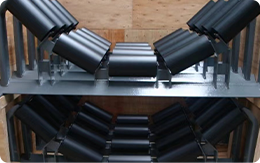 Afrikaans
Afrikaans  Albanian
Albanian  Amharic
Amharic  Arabic
Arabic  Armenian
Armenian  Azerbaijani
Azerbaijani  Basque
Basque  Belarusian
Belarusian  Bengali
Bengali  Bosnian
Bosnian  Bulgarian
Bulgarian  Catalan
Catalan  Cebuano
Cebuano  Corsican
Corsican  Croatian
Croatian  Czech
Czech  Danish
Danish  Dutch
Dutch  English
English  Esperanto
Esperanto  Estonian
Estonian  Finnish
Finnish  French
French  Frisian
Frisian  Galician
Galician  Georgian
Georgian  German
German  Greek
Greek  Gujarati
Gujarati  Haitian Creole
Haitian Creole  hausa
hausa  hawaiian
hawaiian  Hebrew
Hebrew  Hindi
Hindi  Miao
Miao  Hungarian
Hungarian  Icelandic
Icelandic  igbo
igbo  Indonesian
Indonesian  irish
irish  Italian
Italian  Japanese
Japanese  Javanese
Javanese  Kannada
Kannada  kazakh
kazakh  Khmer
Khmer  Rwandese
Rwandese  Korean
Korean  Kurdish
Kurdish  Kyrgyz
Kyrgyz  Lao
Lao  Latin
Latin  Latvian
Latvian  Lithuanian
Lithuanian  Luxembourgish
Luxembourgish  Macedonian
Macedonian  Malgashi
Malgashi  Malay
Malay  Malayalam
Malayalam  Maltese
Maltese  Maori
Maori  Marathi
Marathi  Mongolian
Mongolian  Myanmar
Myanmar  Nepali
Nepali  Norwegian
Norwegian  Norwegian
Norwegian  Occitan
Occitan  Pashto
Pashto  Persian
Persian  Polish
Polish  Portuguese
Portuguese  Punjabi
Punjabi  Romanian
Romanian  Russian
Russian  Samoan
Samoan  Scottish Gaelic
Scottish Gaelic  Serbian
Serbian  Sesotho
Sesotho  Shona
Shona  Sindhi
Sindhi  Sinhala
Sinhala  Slovak
Slovak  Slovenian
Slovenian  Somali
Somali  Spanish
Spanish  Sundanese
Sundanese  Swahili
Swahili  Swedish
Swedish  Tagalog
Tagalog  Tajik
Tajik  Tamil
Tamil  Tatar
Tatar  Telugu
Telugu  Thai
Thai  Turkish
Turkish  Turkmen
Turkmen  Ukrainian
Ukrainian  Urdu
Urdu  Uighur
Uighur  Uzbek
Uzbek  Vietnamese
Vietnamese  Welsh
Welsh  Bantu
Bantu  Yiddish
Yiddish  Yoruba
Yoruba  Zulu
Zulu rubber drive pulley
Understanding Rubber Drive Pulleys Importance and Applications
Rubber drive pulleys are integral components used in various mechanical systems, particularly in the context of conveyors, belts, and machinery. These pulleys play a vital role in transmitting power and motion between different machinery while minimizing wear and tear. The elasticity and durability of rubber make it an optimal choice, but understanding the specifications, design, and applications of rubber drive pulleys is essential for maintenance and efficiency.
What are Rubber Drive Pulleys?
A drive pulley is a wheel that is used to transmit power from one part of a machine to another, often through a belt. When this pulley is composed of rubber or has a rubber lining, it enhances the grip and traction between the pulley and the belt. The primary function of a rubber drive pulley is to transmit torque and ensure smooth operation by reducing slippage during power transfer.
Rubber pulleys typically come in various sizes and designs, catering to different load capacities and an array of industrial applications. Their design can significantly impact performance, including factors such as diameter, groove shape, and surface texture, which all serve to improve functionality depending on the specific requirements of the system.
Advantages of Rubber Drive Pulleys
1. Enhanced Grip and Traction One of the primary advantages of rubber drive pulleys is their superior grip compared to metal pulleys. The elasticity of rubber allows for better friction with belts, reducing slippage and enhancing the efficiency of power transmission. This is particularly important in applications with variable load conditions.
2. Noise Reduction Rubber provides natural sound-dampening properties. This attribute is essential in environments where noise reduction is a priority, such as in manufacturing plants and assembly lines.
3. Vibration Absorption Similarly to noise reduction, rubber's ability to absorb vibrations extends the overall life of the machinery. It minimizes wear and tear on both the pulley and the associated components, helping to maintain a smoother operation.
4. Corrosion Resistance Rubber has inherent resistance to many chemicals and environmental factors, which makes rubber drive pulleys suitable for various industrial settings, including those subjected to corrosive substances.
5. Cost-Effective While the initial cost of rubber pulleys may be higher than that of some metal alternatives, the longevity and reduced maintenance costs often result in overall savings.
rubber drive pulley

Applications of Rubber Drive Pulleys
Rubber drive pulleys find extensive use across various industries, thanks to their versatile attributes
1. Conveyor Systems A major application of rubber drive pulleys is in conveyor systems. They facilitate the movement of materials, products, and components efficiently through different stages of production.
2. Agricultural Equipment In agriculture, these pulleys are commonly used in machinery like combines and harvesters, where reliability and durability are critical under harsh operating conditions.
3. Automotive Industry Cars and other vehicles utilize rubber drive pulleys in engine applications, helping to drive belts that power various components, including air conditioning and water pumps.
4. Textile and Manufacturing Industries Rubber drive pulleys play a crucial role in textile machinery and numerous manufacturing lines, where consistent power delivery at varying speeds is required.
Maintenance of Rubber Drive Pulleys
To ensure optimal performance, regular maintenance of rubber drive pulleys is paramount. This involves
- Visual Inspections Regular checks for wear and tear, cracks, or deformities in the rubber can prevent unforeseen breakdowns. - Alignment Checks Misalignment can cause additional stress and wear; ensuring proper alignment can enhance the durability of the pulley. - Cleaning Keeping the pulley clean from debris and grime will help maintain its effectiveness and prolong its life.
Conclusion
Rubber drive pulleys are indispensable components in many mechanical systems, offering various advantages such as enhanced traction, noise reduction, and cost-effectiveness. Their roles span across numerous industries, from agriculture to automotive applications, underscoring their versatility. Understanding their maintenance and operational principles can greatly contribute to improved efficiency and longevity in industrial machinery. As technology advances, the development of even more effective rubber drive pulleys will likely continue, supporting the ever-evolving needs of modern industry.
-
Trusted Conveyor Solutions from Leading Conveyor Idler Roller ManufacturersNewsJun.27,2025
-
Reliable Return Idler Solutions for Efficient Belt Conveyor SystemsNewsJun.27,2025
-
Precision Conveyor Accessories for Streamlined Material HandlingNewsJun.27,2025
-
High-Quality Belt Conveyor Idler Solutions for Efficient Material HandlingNewsJun.27,2025
-
High-Performance Belt Conveyor Pulleys for Reliable Material HandlingNewsJun.27,2025
-
Enhancing Material Handling EfficiencyNewsJun.27,2025





























